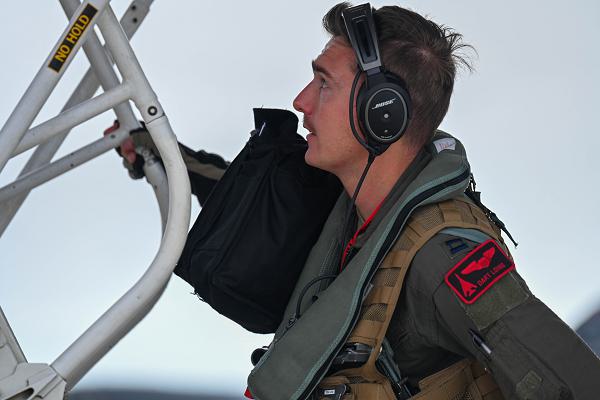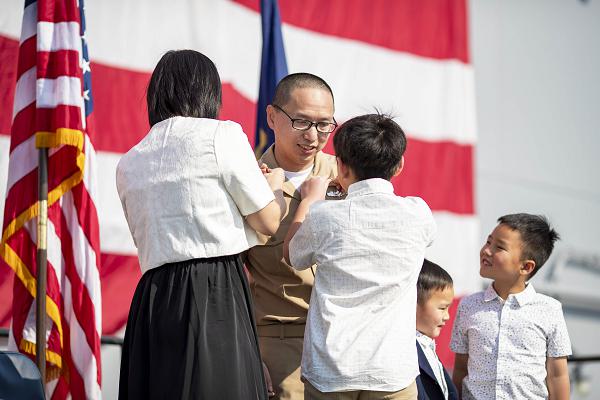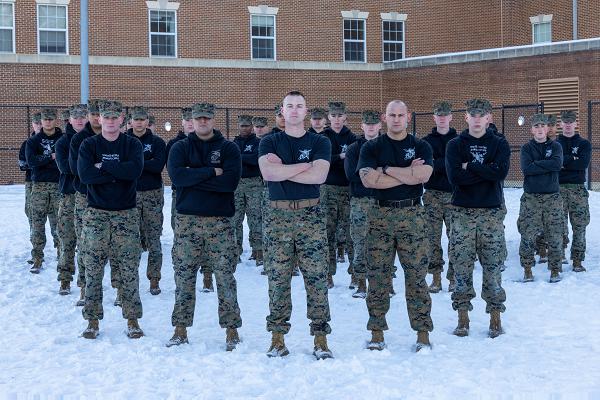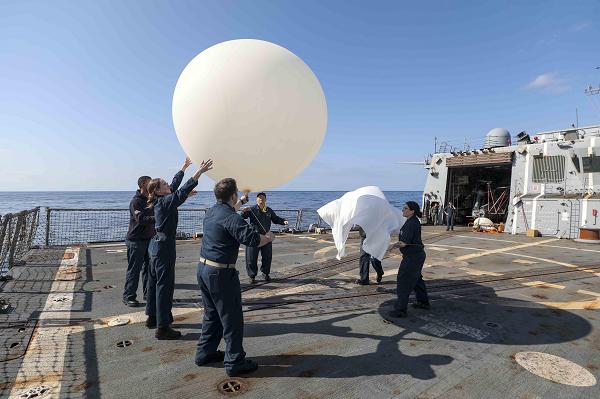- Details
- Hits: 1003
PENTAGON, (Feb. 20, 2025): During a recorded, on-camera address from the Pentagon today, Defense Secretary Pete Hegseth discussed his priorities of strengthening the military by cutting fiscal fraud, waste and abuse at DOD while also finding ways to refocus the department's budget.
Hegseth began his remarks stating the Defense Department owes the American people transparency related to steps DOD is taking to accomplish its mission while being good stewards of taxpayer dollars.
"We shoot straight with you. We want you, the American people — the taxpayers — to understand why we're making the decisions that we're making here," Hegseth said, adding that DOD is working as quickly as possible to execute the priorities of achieving peace through strength by rebuilding the military, restoring the warrior ethos and reestablishing deterrence.
Read more: HEGSETH ADDRESSES STRENGTHENING MILITARY BY CUTTING EXCESS, REFOCUSING DOD BUDGET
- Details
- Hits: 4351

Andersen Air Force Base, Guam. (February 4, 2025): It can fly over 12,000 miles non-stop and drop a bomb in a terrorists’ back yard. Those who fly it say it is one sweet ride. In this photo by Airman 1st Class Alec Carlberg, Captain Chase Loving with the 34th Expeditionary Bomb Squadron climbs aboard a B-1B Lancer to begin a mission during Bomber Task Force 25-1. The mission was a non-stop flight from the continental U.S. to Guam lasting more than 31 hours and spanned 12,456 miles. It was intended as a demonstration of the plane’s ability to strike any target, anywhere in the world.
Based at Ellsworth Air Force Base, South Dakota, the 34th Expeditionary is the 4th-oldest active squadron in the Air Force, entering service at the start of World War I. This storied unit has served in every American conflict since.
- Details
- Hits: 4383

San Diego, California. (January 24, 2025): They are the glue that holds a unit together by providing the vital conduit between enlisted troops and the officers who lead them. In short, the non-commissioned officer is the backbone of any successful military. In this photo by Seaman Apprentice Eliora Sims, Chief Petty Officer Si Zhao's wife and son pin him during a ceremony aboard the USS Tripoli.
A Navy Pinning Ceremony celebrates the promotion of First-Class Petty Officers to the rank of Chief, a significant milestone in their careers. In a tradition dating to 1893, family members and fellow Sailors come together to recognize the hard work and dedication of the new Chiefs as they join the ranks of senior leadership.
- Details
- Hits: 4971

Washington, D.C. (February 3, 2025): Due to their discipline and precision, the Silent Drill Platoon is the personification of Marine Corps excellence. The Platoon is a twenty-four-person drill team that conducts dazzling performances for audiences around the country. So, how do you become a member of such a storied unit? In this photo by Lance Corporal Christopher Prelle, the newest members of this elite group pose for a photo after the culmination of Silent Drill Selection. Candidates must pass a six-week course on advanced drill and ceremony and also train at Marine Corps Air Station Yuma, Arizona to perfect their routines. After the grueling physical training and countless hours spent perfecting the art of military drill, these Marines will earn their “black shirts” and a spot in this elite tradition.
The platoon is known for its unique exhibition involving the precise handling of weapons. In a remarkable display of exactness, members execute a series of calculated drill movements with hand-polished, M-1 Garand rifles with fixed bayonets. The routine concludes with a striking rifle inspection sequence demonstrating elaborate rifle spins and tosses.
- Details
- Hits: 4252

Norway. (February 1, 2025): The key to winning a war against Russia may lie in a series of caves that “preposition” vital military hardware on its border. In this photo by Corporal Nicholas Martinez, a Marine ground electronics transmission system maintainer with 2nd Light Armored Reconnaissance Battalion, 2nd Marine Division, II Marine Expeditionary Force, inspects a radio set inside an up-armored Humvee at Marine Corps Prepositioning Program Norway (MCPP-N).
The MCPP-N is a Cold War era plan to preposition Marine Corps equipment in Europe to defend NATO against a Russian attack. The program uses eight built-for-the-purpose caves to store enough equipment to reinforce a Marine regimental combat team. To accomplish this, the MCPP-N created a network of climate-controlled caverns to store enough material to support roughly 15,000 Marines for 30 days.
- Details
- Hits: 3316

Pacific Ocean. (January 23, 2025): In today’s world of highly advanced aircraft, the U.S. Navy is clinging to an old and reliable tool… the unpretentious balloon. In this photo by Petty Officer 1st Class Donavan K. Patubo, Sailors launch a radar sphere on the flight deck aboard the USS Howard. Surprisingly, the humble balloon continues to be a vital tool for early warning and weather data collection aboard American warships.
The Navy uses radar spheres to detect incoming threats, such as missiles and aircraft, and much more. Besides warning of long-range threats, balloons are used to obtain meteorological data and to calibrate radars aboard ships. Crews routinely launch a radiosonde, a small instrument attached to a helium balloon, that measures barometric pressure, temperature, and relative humidity. These battery-powered instruments transmit data to a ground station via radio. By tracking the radiosonde in flight using GPS, measurements of wind speed and direction can also be obtained. The system provides a wealth of information concerning the real-time state of the atmosphere.


